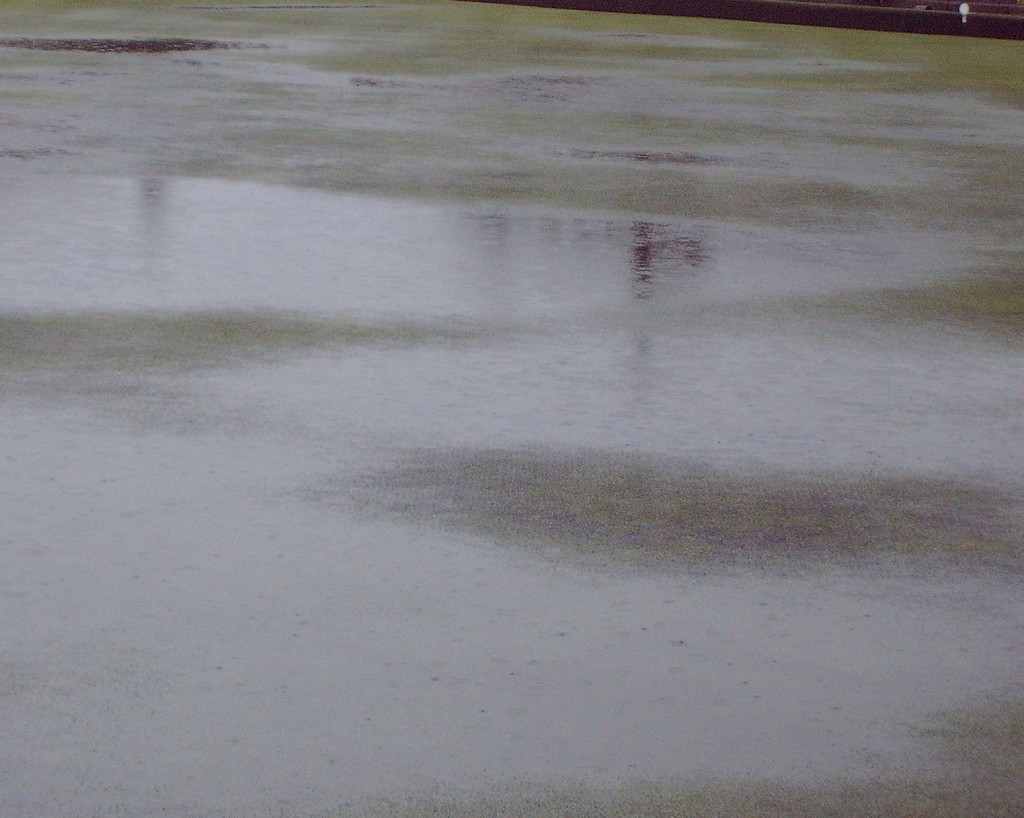A common question is “How much does it cost to water a bowling green for a season?”
Answer: a lot less for a performance bowling green than one in the throes of a traditional maintenance program.
It surprises me that clubs are surprised at the little surprises they get when the water bill comes in.
How can you be surprised that you used more water this year when you added 5 or 10 tonnes of sand to the green last autumn?
Many greens are already unmanageable in a normal (UK) summer due to excessive water requirements, localised dry patch and impermeable thatch; in a drought scenario its unlikely that there is any amount of water that would suffice.
This is because most of the water applied to poorly maintained greens is wasted to evaporation, run off and/or leaching.
Thick thatch holds water at the surface like a sponge, until of course LDP sets in, then it becomes akin to concrete and most water is lost to run off.
LDP causes soil particles to become hydrophobic, shedding any water that gets through the thatch to the macro-pores in the soil and away to the drains.
Performance greens can be watered cheaply and effectively because they only need enough to keep them alive during prolonged dry periods and can mostly take care of themselves in the normal course of a British Summer.
In many cases there is no need for anything more sophisticated than a large holding tank (the bigger the better) a simple pump and a 19mm hose to hand water hot spots on the green. This is much more effective than pop up sprinklers.
Water requirements and routines are given in more detail here.



